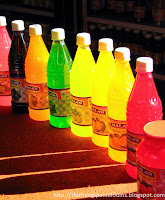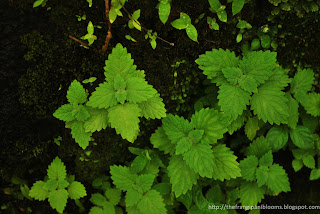 |
| Layered Basalt, Mahabaleshwar |
 |
Road to Sinhagad
The Lion Fort |
If you happen to be flying into Mumbai from a south-easterly direction during the day, you cannot miss them. Just as the descent into Mumbai is announced, the dusty plains suddenly break up into long rectangular and jagged hills. A dam here and there, a river snaking its way, a patch of unbroken forest, and bare step-like cliffs – the details are all the more visible as the aircraft loses altitude. They disappear as quickly as they appear, and soon the creeks, mangroves and slums of Mumbai replace the view, before you touch down.
The Western Ghats form a 1600km long wall against the western coast of India, starting near the southern border of the state of Gujarat, down to southern tip of India. Himalayas may be the more famous of the Indian mountain ranges, but the Western Ghats are far older. They are remnants of volcanic activity when the Indian landmass broke away from Madagascar, on its way to ram in Eurasia and push up the Himalayas. They are, in fact, the faulted western edge of the Deccan Plateau, created by layers of volcanic rock. Hence the steep cliff-like western slopes, and the gentle, at times barely discernible, eastern slopes.
 |
| The Scorpion's Sting, Lohagad, The Iron Fort |
They’ve walled off a narrow strip of coastal plains to their west from the rest of India. Called the Konkan coast in the north, the Canara coast further down, and the Malabar coast near the southern end, this is the land that greeted the first western traders to come to India in search of trade, and later, colonies.
The Ghats are a couple of hours drive from two of the biggest cities in the state of Maharashtra, Mumbai and Pune. For guys like me who grew up here, it is almost impossible not to have visited the hill-stations and forts in the Ghats on picnics and treks. Most visits were revelations though - middle school history and geography made sure that we knew about these hills in as uninteresting and hopelessly pedagogic a way as possible.
 |
| Atop Lohagad |
 |
Monsoon Clouds
Sinhagad |
Locally called the Sahyadri Mountains, the Ghats provided significant military advantage to those who held control over them. The flat topped hills made for perfect military outposts and watch towers over the few navigable passes from the plateau down to the coast. Numerous forts have been built at strategic locations, to control the valleys and trade routes they overlooked. Where the cliff-faces were not steep enough, they were blasted using explosives to create sheer rock walls hundreds of feet high. And where that was not enough, massive stone embankments were constructed, many of them strong enough to be still standing for over half a millenium.
In a period pre-dating the use of motorised vehicles and aircraft, it is easy to see why a few hundred people armed with canons and guns could hold the fort - and effectively hold the surrounding countryside. The roots of the Maratha Empire can be traced to here. In its early years, Marathas, the local warrior peoples, held their own in these hills against the Deccan Sultans and the mighty Mughal Empire for decades, with the help of guerrilla warfare. Now, are all that’s needed to visit these forts is a fit pair of legs, some endurance to the sun and thirst, and a love of the outdoors-they make for great weekend hikes.
 |
| Road through the Ghat forest, Mahabaleshwar |
 |
| Fruit Crushes, Mahabaleshwar |
The Western Ghats profoundly affect climate and life, in ways that are now taken for granted. India’s south-west monsoons hit the Ghats before they can cross over into the peninsula, causing heavy precipitation on their western slopes. The coastal plains and the Ghats are much wetter, greener and tropical than the dry grasslands further in. The climates of Mumbai and Pune are testimony to this fact-incidentally, Pune with its hot dry summers and cold winters is definitely more liveable than coastal Mumbai, which is always humid and warm, save for a few months of winter.
Further south, on the Malabar coast, the Ghats create the climate that allows the cultivation of spices. Spices were the reason why Vasco Da Gama set sail for India, and why Columbus, though he set out for the same destination, bumped into America. In the higher reaches, the Ghats create a cool climate that European colonisers sought so much in the tropics, and created the many hill-stations that dot the range.
 |
Monsoon Torrents
Magod Falls, North Karnataka |
 |
Fresh Produce
Mahabaleshwar |
Moreover, dozens of rivers arise in the Ghats, and depending on whether they flow west or east, they either have a few dozen or upto a thousand five hundred kilometres to flow across. The ones that happen to flow down the eastern slopes of the Ghats become the life-line of millions across the peninsula. So in a way, though the Ghats block rainfall from the Deccan Plateau on the one hand, they also provide perennial water supply to these parched lands on the other.
Down south, the terrain and the climate in the Ghats have given rise to vast stretches of semi-evergreen and evergreen forests. Sholas, unique high-altitude mountain forests of dense short tree cover interspersed with grassland-occur nowhere else but here. The richness of the flora and fauna caused this area to be recognised as one of the world’s Biodiversity Hotspots-an area holding a great wealth of diverse plant and animal life, but under intense pressure from population. They are also being considered as a UNESCO World Heritage Site.
 |
| Sunset, Lohagad |
 |
| Monsoon Freshness, Sinhagad |
All in all, the Western Ghats are special. They are home to some of the wildest and most pristine natural habitats in India, a huge huge attraction for me. The Shola forests around Kudremukh National Park, the rain forest around Agumbe, and the many national parks around the Niligiri and the Annamalai hills are very high on the to-visit list. With some luck, I shall write about them here.
WAUMJKGPNFMA












Super like....!!!! Aapli maati aapli maansa.. :)
ReplyDeleteVery nice, and gorgeous pictures, too! :)
ReplyDeleteThanks guys!
ReplyDelete